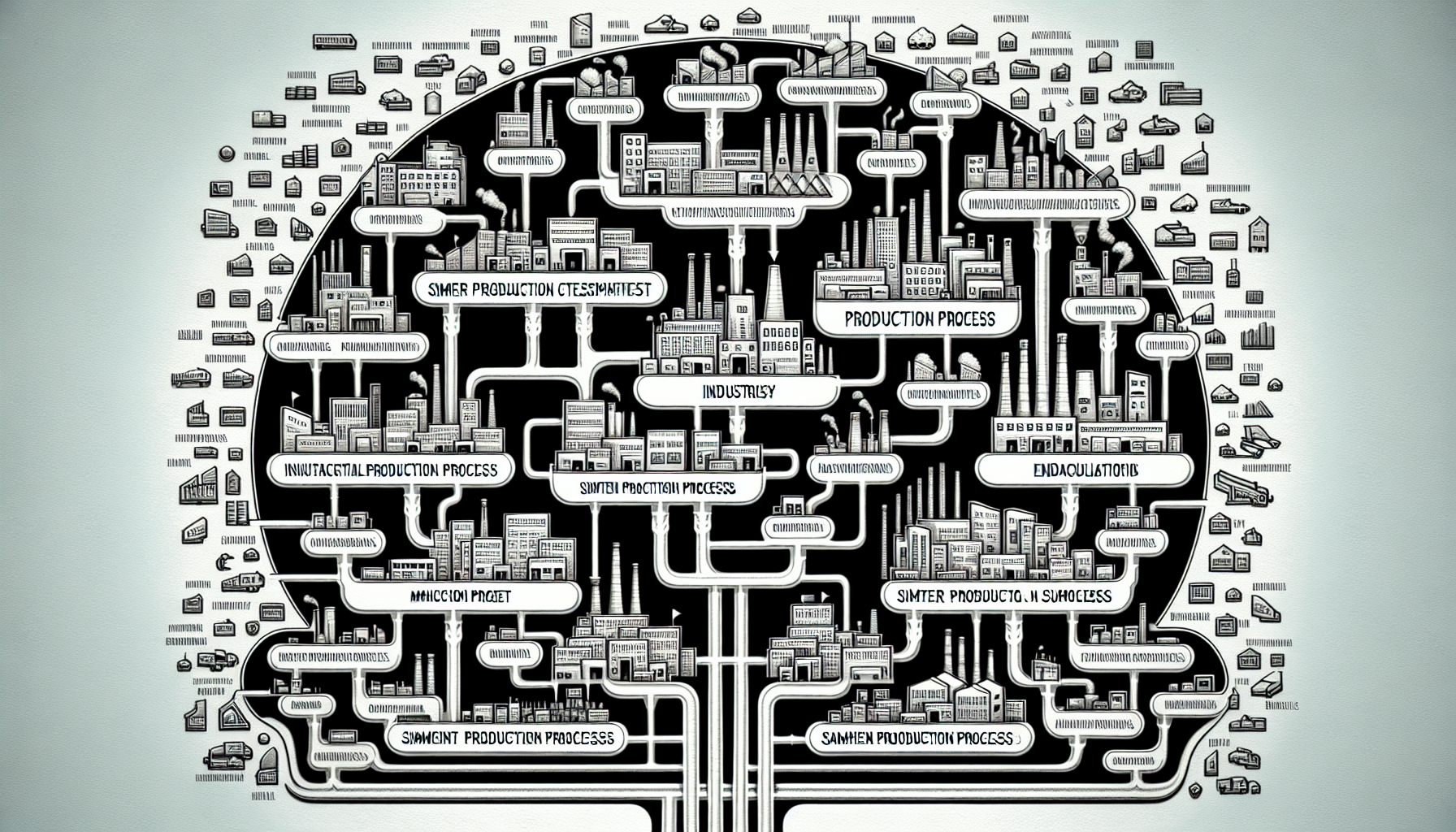The North American Industry Classification System (NAICS) codes, also known as North American Industry Classification System codes, categorize businesses based on their primary activities. Used by the U.S., Canada, and Mexico, these codes standardize economic data across borders. This article will cover what NAICS codes are, their structure, and their applications.
Key Takeaways
-
NAICS is a comprehensive system designed for classifying business establishments based on their primary activities, offering harmonized data comparisons across the U.S., Canada, and Mexico, and is updated every five years to reflect economic changes.
-
NAICS codes use a six-digit hierarchical structure for detailed and specific business classification, ensuring comparability and consistency across North America, with the sixth digit varying to accommodate national differences.
-
NAICS codes serve various key roles, including aiding government policy analysis, supporting businesses in strategic planning, and providing tools for detailed economic analysis and comparison with the older SIC system.
What is the North American Industry Classification System (NAICS)?

The North American Industry Classification System (NAICS) is the standard used by federal statistical agencies for classifying business establishments based on their primary activity. This system is instrumental in publishing consistent and comparable statistical data across varied economic activities in the U.S. business economy. With its precise business classification, NAICS guarantees the robustness and reliability of the collected data, significant for administrative, compliance, and strategic purposes.
One of the significant advantages of NAICS is its ability to produce harmonized data that facilitates a high level of comparability among the U.S., Canada, and Mexico. Developed in cooperation with Canadian and Mexican statistical agencies, NAICS allows for direct comparison of industrial statistics across these countries. This harmonization aids in comprehending cross-border economic activities and trends.
NAICS is based on a production-oriented concept, meaning it groups establishments by the similarity in their production processes. NAICS codes undergo a review and update every five years to keep pace with the evolving economy, maintaining the system’s accuracy and its reflection of current industry realities.
Evolution from SIC to NAICS
The transition from the Standard Industrial Classification (SIC) system to the new industry classification system, NAICS, in 1997 was a significant milestone aimed at accommodating new and emerging sectors that the SIC system could not effectively represent. The SIC system, which had been in use for decades, faced increasing criticism for its inability to keep pace with the rapidly changing business environment. NAICS was developed to provide a more detailed and accurate classification of the modern business economy.
NAICS, a joint venture by the U.S. Economic Classification Policy Committee, Statistics Canada, and Mexico’s Instituto Nacional de Estadistica y Geografia, promises enhanced comparability of business statistics among the three North American countries thanks to its collaborative approach. The transition was designed to be seamless, with the sunset of the SIC system in 2004 marking the complete adoption of NAICS.
One of the key benefits of NAICS is its increased comparability with the International Standard Classification System (ISIC, Revision 3), which helps integrate U.S. economic data with global standards. While SIC codes do not seamlessly convert to NAICS codes, the new system’s structure and detailed classification offer a more comprehensive view of economic activities, reflecting a modernized approach to industry classification. Understanding the differences between a sic or naics code can be crucial for businesses when classifying their activities.
Structure of NAICS Codes
NAICS codes use a six-digit hierarchical structure, providing greater specificity compared to the four-digit structure of the SIC system. This structure allows for a more detailed classification of business activities, which is essential for accurate data collection and analysis. An increase in the number of code digits leads to a more specific classification, simplifying the identification and categorization of complex business operations.
Each digit in a NAICS code represents a different hierarchical level of economic classification. Here is a breakdown of what each digit represents:
-
The first two digits identify the major economic sector, such as manufacturing or retail.
-
The third digit designates the economic subsector, providing further detail within the major sector.
-
The fourth digit represents the industry group, narrowing down the classification even further.
-
The fifth digit identifies the specific NAICS industry.
-
The sixth digit is used for national industries, allowing for country-specific categorizations.
The first five digits of a NAICS code are standardized across the U.S., Canada, and Mexico, ensuring comparability of data among these countries. The sixth digit, however, may vary to accommodate national differences, reflecting the unique economic activities within each country. This hierarchical structure not only provides detailed classification but also ensures consistency and comparability across North America.
How NAICS Codes Are Assigned
NAICS codes are assigned based on a company’s primary business activities, which are the main actions or activities that generate revenue and define business operations. These primary activities play a key role in determining a business’s appropriate NAICS code, assuring an accurate reflection of the firm’s main economic engagements in the classification.
The process of assigning NAICS codes involves an evaluation of a company’s principal business activities. This evaluation is typically conducted by examining the products or services offered by the business and identifying the primary revenue-generating activities. A precise determination of these activities allows the assigned NAICS code to provide a clear and exact classification, aiding various administrative, compliance, and strategic uses.
For example, a company primarily engaged in manufacturing electronic components would be assigned a NAICS code reflecting its specific industry group and subsector within the goods producing sectors, particularly the manufacturing sector. This precise classification helps in analyzing industry trends, developing policies, and conducting market research, ensuring that the business is accurately represented in statistical data.
Key Differences Between SIC and NAICS Codes

NAICS codes offer more detailed classification compared to SIC codes, providing a more accurate representation of a firm’s activities. While SIC codes used a four-digit structure, NAICS codes utilize a six-digit hierarchical structure, allowing for greater specificity and a more nuanced classification of business operations. This additional detail is key to capturing the complexities inherent in the modern business environment.
NAICS includes 1,170 industries, compared to the 1,004 industries covered by the SIC system. This broader range encompasses 358 new industries recognized in NAICS, 250 of which are service-producing industries. This expansion reflects the growing importance of the service sector in the economy and ensures that emerging industries are adequately represented in the classification system, including twenty industry sectors.
Another key difference is the methodology used for grouping establishments. NAICS groups businesses based on similar production processes, while SIC codes grouped industries based on demand or production. This production-oriented approach provides a more accurate reflection of the economic activities and processes within each industry, facilitating better analysis and comparison of business data.
Practical Uses of NAICS Codes
NAICS codes are used extensively for statistical purposes, aiding in the collection, analysis, and publication of U.S. economic data. The Economic Census, for example, publishes detailed industry data based on NAICS codes, providing valuable insights into various sectors of the economy. This data is fundamental for comprehending economic trends, making informed policy decisions, and conducting academic research. By publishing statistical data related to these NAICS codes, a deeper understanding of the economy can be achieved.
Government agencies use NAICS codes for the following purposes:
-
Developing and implementing policies by analyzing economic activity and trends
-
Creating targeted regulations and initiatives that support economic growth and stability
-
Tracking the impact of policies over time to ensure effectiveness and responsiveness to changing economic conditions.
Businesses also benefit from NAICS codes in the following ways:
-
Using them for market analysis and strategic planning
-
Accessing detailed industry classifications and performance data
-
Identifying market opportunities and assessing competition
-
Making informed decisions about expansion and investment
-
Providing a standardized framework for understanding the competitive landscape and identifying key trends within specific industry sectors.
Accessing and Using NAICS Data

NAICS data can be accessed through various tools available on the U.S. Census Bureau website, allowing users to generate reports and analyze industry data. These tools provide comprehensive reference files and datasets that can be used for detailed economic analysis and research. By leveraging these resources, users can gain valuable insights into different sectors and industry classifications.
The NAICS Association also provides links to free online market research tools, offering additional resources for accessing and analyzing NAICS data. These tools are useful for businesses, researchers, and policymakers who need to understand industry trends and make data-driven decisions. These resources allow users to delve into a wide range of economic data and generate customized reports tailored to their specific needs.
For those who need to convert between SIC and NAICS codes, the NAICS to SIC Crosswalk tool and the SIC to NAICS Crosswalk tool are invaluable resources. These tools help in identifying corresponding codes between the two classification systems, ensuring that historical data can be accurately compared and analyzed. Additionally, the online Create a Report tool allows users to obtain historical QBR NAICS data, providing further insights into industry performance over time.
Summary
The North American Industry Classification System (NAICS) is an essential tool for classifying business establishments and understanding economic activities. Its detailed and hierarchical structure provides a robust framework for collecting and analyzing economic data, ensuring that businesses are accurately represented in statistical publications. NAICS’s ability to harmonize data across the U.S., Canada, and Mexico further enhances its utility and relevance in today’s global economy.
NAICS codes offer numerous benefits, including greater specificity and a broader range of industry classifications compared to the SIC system. By grouping businesses based on similar production processes, NAICS provides a more accurate reflection of economic activities, facilitating better analysis and comparison of business data. This detailed classification is crucial for policy development, market analysis, and strategic planning.
In conclusion, NAICS is a powerful classification system that plays a vital role in understanding and analyzing the modern business economy. Its periodic updates ensure that it remains relevant and reflective of current industry realities. By leveraging NAICS codes, businesses, researchers, and policymakers can gain valuable insights into economic trends and make informed decisions that drive growth and stability.
Frequently Asked Questions
What is the purpose of NAICS codes?
NAICS codes are used to classify business establishments based on their primary activities, providing a standardized framework for collecting and analyzing economic data. They help in organizing and understanding economic information effectively.
How often are NAICS codes updated?
NAICS codes are reviewed and updated every five years to ensure they are current with the evolving economy.
How do NAICS codes differ from SIC codes?
NAICS codes differ from SIC codes in that they provide more detailed classification and cover a broader range of industries, using a six-digit hierarchical structure compared to the four-digit structure of SIC codes.
How can I find the NAICS code for my business?
You can find the NAICS code for your business by evaluating your primary business activities and using the tools available on the U.S. Census Bureau website or the NAICS Association website.
Who uses NAICS codes and why?
NAICS codes are used by federal statistical agencies, government agencies, businesses, and researchers for statistical purposes, policy development, and market analysis, making them valuable for various analytical and research purposes.


